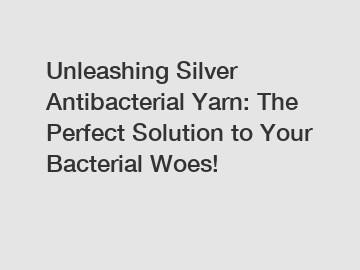Plastic Injection Mold Making

Plastic injection molds are typically constructed from hardened or pre-hardened steel, aluminum, and/or beryllium-copper alloy. Steel molds cost more, but are often preferred because of their high durability. Hardened steel molds are heat treated after machining, and they are by far superior in terms of wear resistance and lifespan.
Many steel molds are designed to process well over a million parts during their lifetime. For lower volumes, pre-hardened steel molds provide a less wear-resistant and less expensive option.
Aluminum molds, on the other hand, can cost substantially less, but they typically are ill-suited for high-volume production or parts with narrow dimensional tolerances. Nevertheless, aluminum molds can economically produce tens of thousands to hundreds of thousands of parts, when designed and built using computer numerical control (CNC) machines or Electrical Discharge Machining (EDM) processes.
Copper alloy inserts are sometimes used in areas of the mold that require fast heat removal. This can reduce cycle time and improve the aesthetic quality of the part.
How Are Plastic Injection Molds Made?
Molds are constructed through two main methods: standard machining and electrical discharge machining(EDM).
Standard/CNC Machining
CNC MachineIn its conventional form, standard machining requires the manual use of lathes, milling machines and drill presses. With advanced technology, CNC machining has become the predominant means of creating more complex and accurate molds, while still using standard machining methods. With CNC, computers are used to control the movement and operation of the mills, lathes, and other cutting machines.
In modern CNC systems, the mold design and manufacturing processes are both highly automated. The mold’s mechanical dimensions are defined using computer-aided design (CAD) software, and then translated into manufacturing instructions by computer-aided manufacturing (CAM) software. “Post processor” software then transforms these instructions into the specific commands necessary for each machine used in creating the mold. The resulting commands are then loaded into the CNC machine.
Electrical Discharge Machining
Additional resources:Glass Candle Jars: Enhancing Ambiance and Elegance
Glass Ring Holder: Organize and Showcase Your Precious Rings
What is the difference between red and white wine goblets?
Glassware Buying Guide: Choosing the Perfect Glassware for Every Occasion
Glass Jewelry Boxes: Elevating Elegance and Practicality
What are the most realistic fake flowers made of?
What is a silvery fabric?
Electrical discharge machining (EDM) has become widely used in mold making. EDM is a process in which a desired shape is obtained through the use of an electrode, which is fabricated out of graphite or copper. It is then mounted in an EDM machine and positioned over the workpiece, which is submerged in a dielectric fluid.
The electrode is then lowered to the workpiece. Then, using a controlled electrical source, the electrode is used to destroy and disperse the metal in the area opposite of the electrode. The electrode never contacts the workpiece. A spark gap of a few thousandths of an inch is always maintained between the electrode and workpiece. This process is a slower method of removing metal from a mold; however, the EDM process can produce shapes that are not possible with conventional CNC machining.
Another advantage of the EDM process is that it allows pre-hardened molds to be shaped and eliminates the need for additional heat-treating. At times, such as with speaker grille molds, the resulting fine EDM finish serves to be the final part finish without any polishing of the mold cavity.
Molds Design
The injection molding pvc consists of two primary components, the cavity half of the mold (A half) and the ejector half of the mold (B half). These mold halves are designed to work in conjunction as follows:
Plastic resin from the molding machine enters through a “sprue” or “gate” on the A half.
A sprue bushing seals tightly against the nozzle of the injection barrel of the molding machine. This allows the molten plastic to flow from the barrel into the mold (or “cavity”).
The sprue bushing directs the molten plastic through channels (called “runners”) that are machined into the faces of the A and B halves of the mold.
The molten plastic flows through the runner and enters one or more specialized gates and into the cavity to form the desired part.
A mold is usually designed so that the molded part reliably remains on the B half of the mold when it opens. The runner and the sprue are drawn out of the A half. The molded part then falls freely when ejected from the B half.
A single plastic injection mold can have one cavity, producing one part at a time, to multiple cavities for extremely high-production molds (like those for bottle caps) that can have 100 plus cavities.
What is the purpose of a blanket?
What is silver plated nylon?
Which Artificial Daisies Bulk Inspire Creative Brilliance?
Which Silver Ion Fabric Innovation Enhances Health?
Discover the Ultimate Heat-Proof Fabric: Say Goodbye to Hot Clothes!
Which Ingenious Hacks Turn Artificial Blooms Lifelike?
Which artificial hyacinth colors suit minimalist decor?
1090
0
0
Related Articles
-
Unleashing Silver Antibacterial Yarn: The Perfect Solution to Your Bacterial Woes!
Unleashing Silver Antibacterial Yarn: The Perfect Solution to Your Bacterial Woes!
126
0
0
-
111
0
0
-
Discover Canopy Shield: The Ultimate Solution for All Your Sun Protection Needs!
Discover Canopy Shield: The Ultimate Solution for All Your Sun Protection Needs!
226
0
0
-
257
0
0
-
267
0
0
-
Unveiling the Magic of Artificial Gypsophila: A Must-Have Floral Illusion!
Unveiling the Magic of Artificial Gypsophila: A Must-Have Floral Illusion?
267
0
0
-
246
0
0
-
Cotton has been a staple fabric for clothing, bedding, and various other applications for centuries.
224
0
0









Comments
All Comments (0)